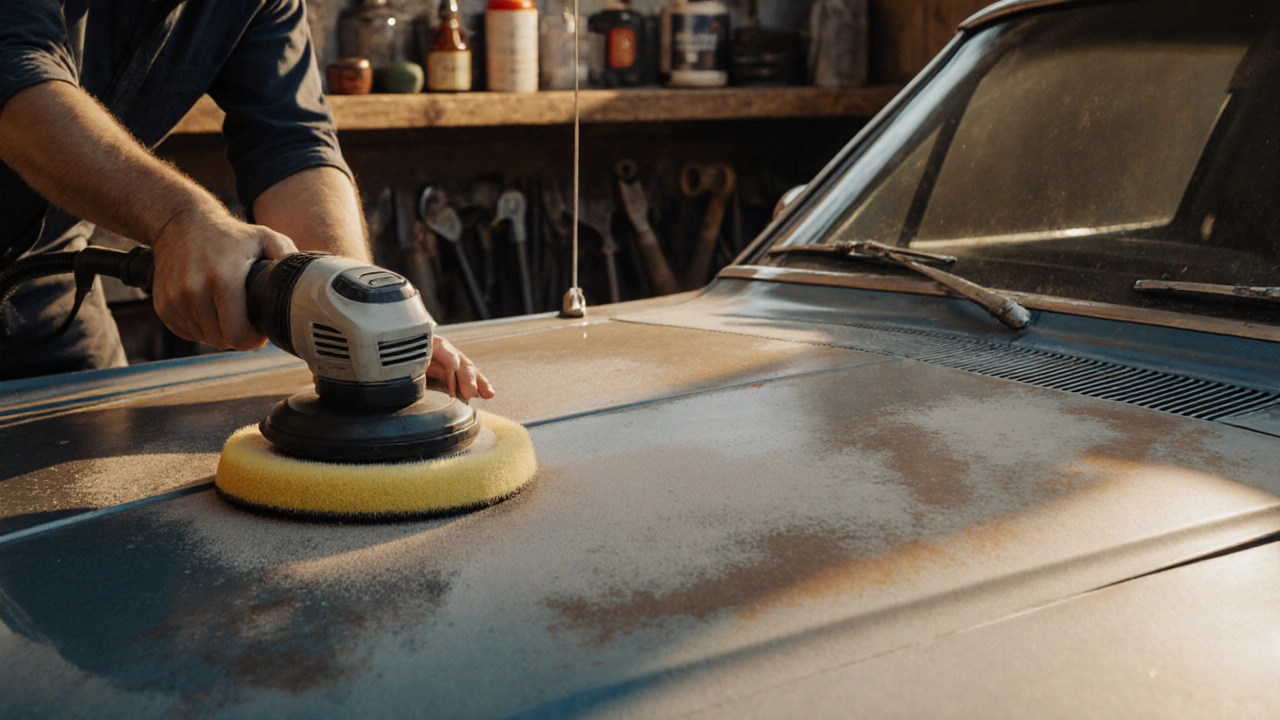When you own a classic car, a vehicle built between the 1920s and 1980s that’s been preserved or restored for its historical or aesthetic value. Also known as vintage car, it isn’t just transportation—it’s a piece of history that needs careful, hands-on care. Classic car detailing isn’t just washing and waxing. It’s about protecting the original paint, restoring faded interiors, and keeping every chrome piece gleaming without damaging the age of the materials. Unlike modern cars with factory coatings and easy-clean surfaces, classic cars have delicate finishes, rubber seals that crack with time, and fabrics that fade under UV light. One wrong product or technique can strip paint, dull trim, or leave streaks that won’t come off.
That’s why paint correction, the process of removing swirls, scratches, and oxidation from a car’s finish using polishing compounds and machine buffers is so critical. Many owners skip this step and just slap on wax, but that only hides the damage. Real detailers start by assessing the paint depth, then use layered polishing to bring back the original gloss—sometimes even restoring factory shine that hasn’t been seen in decades. Then there’s interior restoration, the careful cleaning and conditioning of dashboards, seats, and carpets made from materials no longer in production. Vinyl cracks, leather dries out, and carpet fibers trap decades of dust and oil. You can’t use store-bought cleaners meant for today’s cars—they’ll make it worse. You need products designed for 1970s urethane or 1960s wool blend fabrics.
And it’s not just about looks. Proper car waxing, applying a protective layer that shields paint from UV rays, bird droppings, and acid rain isn’t optional. A classic car’s paint is thinner than modern cars, and the clear coat either doesn’t exist or has long since degraded. Without wax, the color bleeds out, and the metal underneath starts to oxidize. The right wax—usually a natural carnauba blend—doesn’t just shine, it acts like armor. And don’t forget the undercarriage. Rust doesn’t care how good the hood looks. Detailing a classic means checking for hidden corrosion on frame rails, wheel wells, and brake lines. A clean car is a safe car.
What you’ll find in these posts isn’t theory. It’s what people actually do. From how to safely remove tar from a 1968 Mustang’s fender without scratching the paint, to which microfiber towels won’t leave lint on a freshly polished hood, to why you should never use a pressure washer on a 1957 Chevy’s chrome trim. You’ll learn which products still work after 40 years, what tools professionals use that you can buy for under $50, and how to spot a detailer who knows their stuff from one who’s just copying YouTube videos. Whether you’re bringing a garage find back to life or just keeping your daily driver looking sharp, these guides give you the real steps—not the fluff.
Posted by
Liana Harrow
14 Comments

Learn how to properly restore classic car paint using compounding, polishing, and protection techniques that preserve original finishes without causing damage. Essential guide for vintage car owners.
read more